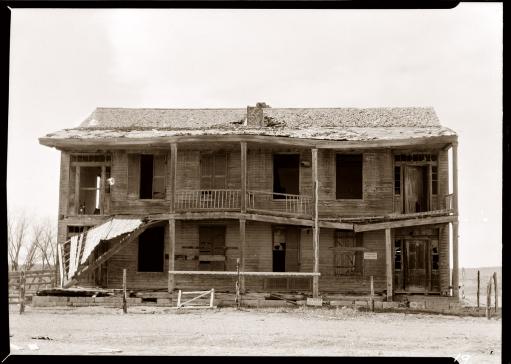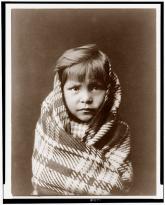Today, 1 p.m.: Meeting w/Big Bear. Note to self: Don't forget cannon!
New-York Times / September 12, 1854
INDIAN OUTRAGES.
Important News from Fort Laramie -- Indians Attacking the Fort and Destroying the American Fur Company's Station -- Carrying off $15,000 Worth of Property.
LOUISVILLE, Monday, Sept. 11.
Information of an authentic nature had been received at St. Louis that about the middle of August a Sioux Indian killed an ox belonging to an emigrant near Fort Laramie. The Chief of the tribe thereupon sent a messenger to Lt. Fleming, the commander of the fort, requesting him to send a force, and he would deliver up the offender. Lieut. Gratton [Grattan], with twenty men, was detached for this service. How, or at what place, is not stated, but the whole of Gratton’s command was killed, without a single exception. It appeared to be a preconcerted plan on the part of the Indians to waylay and murder the party. The massacre was committed on the 18th of August.
It was also stated, when the express left Laramie, that the fort was surrounded by Indians, and there was reason to fear that it would be destroyed. The garrison numbered one commissioned officer and fifty men. It was further stated, also, that after the battle the Indians attacked the American Fur Company’s station, and destroyed it, carrying off goods worth from $10,000 to $15,000.
New-York Times / October 24, 1854
More Particulars of the Massacre at Fort Laramie -- Emigrants -- Crops -- Times and Progress in Utah.
From the Council Bluffs Bugle, Oct. 3.
Through the politeness of the A. J. Smith, F. E. Welch, and J. H. Steinberger, Esqrs., who arrived last week from the Plains, we have obtained the following additional intelligence. They left Salt Lake City on the 10th of August. Met three

“Old Bedlam” (officers’ quarters), Fort Laramie, Wyoming. Full size.
large trains of English, Danish, and other foreign emigrants on their way to Utah, comprising in the whole, over two hundred wagons, besides many smaller scattering companies. All the stock on the road looked well, and all the companies were free from sickness, and in fine spirits.
Met the troops sent to Utah, on account of the Indian difficulties back on Green River -- arrived at Fort Laramie in a few days after the fatal massacre -- found about 600 lodges the Menwecosia [Minneconjou] band of Sioux, (who had perpetrated the murder,) about 12 miles below the fort, at the American Fur Company’s station, and also a large number of Cheyennes, awaiting the arrival of Maj. Whitfield, (successor to Maj. Fitzpatrick, Indian Agent, deceased,) to arrive with and distribute their presents and annuities.
The Sioux had, immediately after the perpetration of the murders, seized upon the presents intended for them, which were lying at the station, but done no further mischief. They alleged that the murder was not committed on account of the attempted arrest of the man who shot the cow; but in revenge for the death of a number of the Indians by soldiers last season, for some murder of whites by the Indians.
The mangled bodies lay for three days unburied in sight of the inhuman traders, excusing themselves, through fear of the Indians; but when two hundred dollars was offered for performing this last sad service, there was no trouble in its accomplishment. The Indian version of the fatal occurrence is:
That the two pieces of ordnance [howitzers] were brought within their encampment. Lieut. Grattan commenced a parley regarding the killing of a cow, when Big Bear, the chief, came up with a sort of lance and struck at and wounded him, calling him a squaw and a coward, and charged him with being afraid to fight. Grattan drew his revolver, fired a number of times, wounding the chief, and then elevated his cannon and fired, intending to intimidate the Indians from further violence, without taking their lives.
The whole band of Indians then made a rush at and killed upon the spot all but one, who finally escaped and lived to get to the Fort, but could make no explanation of the occurrence. He stated that he had been repulsed by one of the French traders and driven away; although he had seven holes shot through him he lived to crawl 20 miles to the Fort. Lieut. Grattan was found under the cannon, pierced with twenty arrows and a number of balls. He had fallen across the cannon, where his life’s blood still adhered. They then filled his cannon with manure, and pulled off and thrust in the Lieutenant’s boots.
Maj. Whitfield arrived soon with the goods for the Cheyennes, via Arkansas, and commenced the distribution. Two bands refused to receive their portion upon the required condition that they should cease committing thefts and depredations upon emigrants to New-Mexico, and their portions of goods returned to the States. The other chiefs informed the Major that next year they wanted a few shirts, 1,000 white squaws, and the remainder of their annuities in cash, and nothing else would be received.
The Major took from this tribe a young man, a captive, (formerly from Iowa,) who was made a prisoner last Spring whilst out hunting; also, two Mexican boys of the age of about eight or ten years respectively. The Indians were very loth to give them up and only did so by the payment of presents and positive threats, and afterwards tried to rescue them at South Fork. General Winship, Military Inspector, with a small force, accompanied Maj. Whitfield to Laramie -- made the necessary examinations and returned with the Major, with whom our informants also came through.
They found an abundance of Buffalo after crossing the South Fork of the Platte, which continued until they reached the new settlements in Kansas, about 100 miles from the Missouri River. In some places they were forced to tie up all their cattle and loose stock to keep them from running off with the Buffalo that were passing around them. The Company had an abundance of the finest meat in the world and lived fat. Our informant returned on the South of the Platte on account of the Company, for safety. They went out on the North side, and report that to be much the best route. They took out a train of goods which they readily sold. One of the companies on the road had a fine brass band, and were enjoying themselves, the evening they met, in dancing.
They found many pioneer settlers in Kansas, on the Blue and other streams, out one hundred miles from the Missouri, and were informed that all the country that was valuable, even at that distance, was claimed. The boys looked hale and healthy, and as though their trip had done them no damage.
The “Grattan Massacre,” as the above incident came to be known, is regarded as the spark that ignited the 30-year-long Plains Indian Wars. More here.
